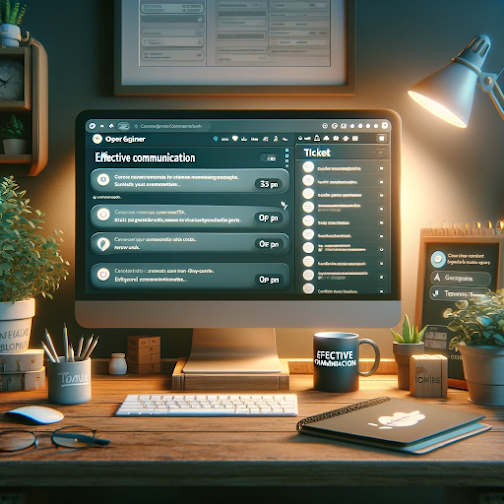In the intricate world of software engineering, design documents are the linchpins holding together the vision, execution, and evolution of software systems. These documents serve as a detailed map charting out the technical journey from a conceptual framework to a fully functioning system.
The Essence of Collaboration and Technical Leadership
Crafting a design document is an exercise in meticulous detail, requiring a confluence of diverse expertise. These documents underscore the collaborative ethos of software development. The collective wisdom encapsulated in these pages is often perceived as a testament to one's capacity for technical leadership. The very act of drafting with a team disperses the workload, allowing for a richer, more nuanced document. It also fosters a sense of shared ownership and accountability among team members, which is crucial for the project's success.
The Iterative Pulse of Design Documents
A design document is never truly 'finished.' It breathes with the life of the project, evolving as new insights emerge and as the implementation landscape shifts. This living document is a chronicle that adapts to reflect the real-time status of the project, ensuring continued relevance. Newcomers to the project find a treasure trove of information within its pages, offering them a historical lens through which to view their work and the rationale behind it.
The Anatomy of a Design Document
A robust design document is architecturally sound, comprising several layers:
- Meta Information: The document’s identity, including its title, authors, and a trail of approvals, gives it structure and traceability.
- Context and Scope: Defining the boundaries and ambitions of the project, this section lays the foundation for understanding the system's intended environment and objectives.
- Overview: Acting as a synopsis, this part navigates the reader through the core components of the document, much like a table of contents merged with an abstract.
- Detailed Design: The heart of the document beats here, with in-depth discussions of technical decisions, architectural diagrams, and the intricate dance of system integrations.
- Relationship to Other Systems: This segment elucidates the interconnectedness of the new system with the existing digital ecosystem, detailing dependencies and interactions.
Diverse Audiences and the Clarity Imperative
The readership of a design document is as varied as the roles within a software project. UX designers, engineers, product managers, and external partners each seek different slices of wisdom from the document. Clarity, therefore, is not just a nicety—it is a necessity. The language and presentation must be accessible, eschewing jargon and complexity for straightforward explanations and logical structuring.
Reflective Learning and the Iterative Spirit
The retrospective power of design documents cannot be overstated. They not only guide the present but also serve as a reflective surface for the past. Authors and stakeholders alike can learn from the decisions encapsulated within its pages, pondering alternative paths and gaining insights for future endeavors.
To conclude, design documents are more than just repositories of technical specifications—they are the narrative backbone of software engineering projects. They encapsulate the intellectual and collaborative efforts of teams, serve as a compass for project direction, and ultimately act as a measure of the project's technical pulse. As dynamic as the systems they describe, these documents are a testament to the ongoing quest for excellence in the software engineering domain, embodying the principles of clarity, collaboration, and continuous improvement.
